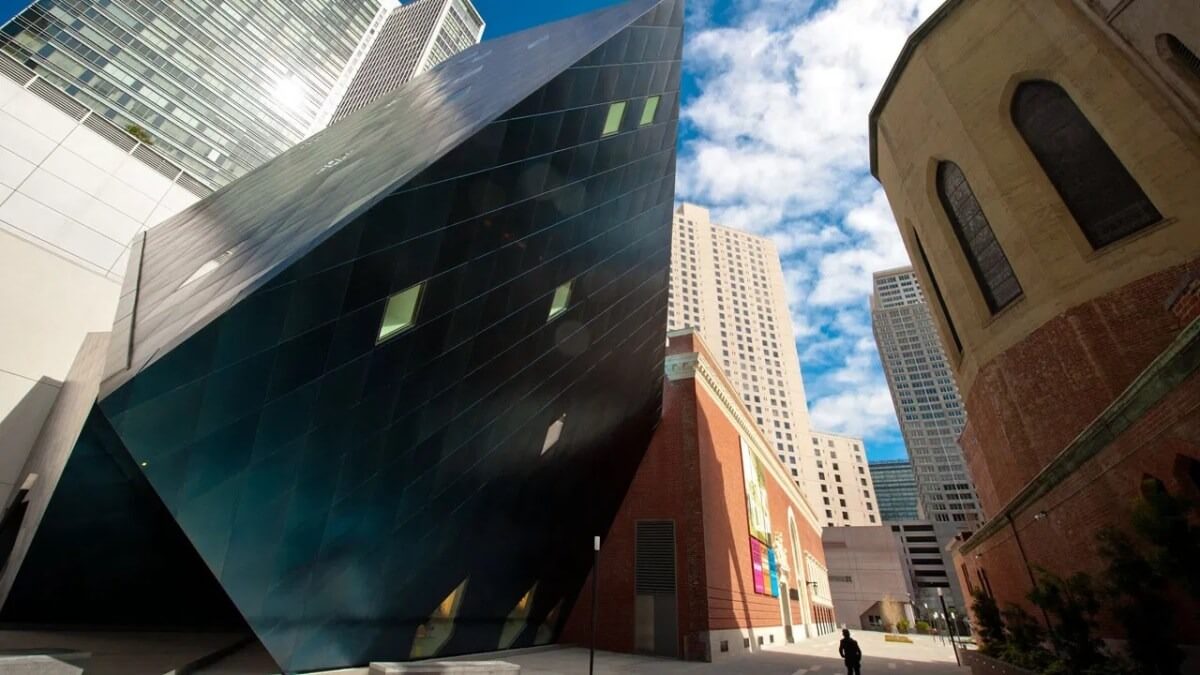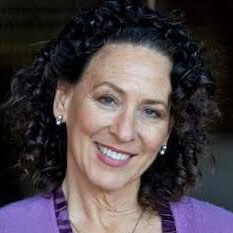Contemporary Jewish Museum in San Francisco will close for a year, citing financial woes
The Contemporary Jewish Museum in San Francisco will close for at least a year, citing financial problems and declining attendance

The Contemporary Jewish Museum’s building includes an angular annex designed by Daniel Libeskind, the star architect, next to the older brick building that makes up the bulk of the museum. (Courtesy CJM)
This story originally appeared on J. The Jewish News of Northern California, and was reprinted here with permission.
The Contemporary Jewish Museum announced Wednesday that it will close temporarily, citing a decline in attendance and the need to develop “financial stability and a sustainable operating model for the future.”
The landmark building in downtown San Francisco with its eye-catching annex designed by Jewish architect Daniel Libeskind will shut its doors on Dec. 15 for at least one year, according to a press release.
The 19-member board of trustees voted unanimously to approve the temporary closure.
About two-thirds of the 30-member museum staff will be put on leave in a staged series of layoffs, without a definite return date, leaving a core staff of 11.
“We must scale back to allow ourselves the time and resources needed for re-imagining and rebuilding,” executive director Kerry King said in the release. “It is far better for us to take necessary steps towards restructuring now, rather than waiting until we no longer have options. This decision does not come without significant pain because it will affect our team of extraordinary and deeply dedicated individuals who work tirelessly to fulfill The Museum’s mission.”
Since its establishment in 1984 in a small gallery space in the bottom of the Jewish Community Federation building a few blocks away from its current site, the museum has described its mission as offering the space and opportunity to express Jewish identity and Jewish values through contemporary art. In 2008, CJM moved into its current building.
CJM has never had a permanent art collection. Instead, it has presented original and traveling exhibitions, as well as educational programs and community events. The decision to follow this path was an “investment in the creative potential of living artists,” former CJM chief curator Renny Pritikin said in 2018 when the museum marked its 10th anniversary.
The museum’s Dorothy Saxe Invitational exhibits, for example, invited artists to contribute original works responding to a specific Jewish ritual object, idea or cultural practice. The most recent of those 12 exhibits, “Tikkun: For the Cosmos, the Community, and Ourselves,” took place in 2022.
Increasingly, the CJM’s mission has also included community education about antisemitism and other forms of hate. “Given the increase in antisemitism over recent years, The CJM’s mission to educate, promote understanding, and celebrate Jewish culture is more critical than ever,” the museum’s release said.
Board chair Tom Kasten said the museum’s goal in shutting temporarily is “to design a sustainable model that not only preserves but amplifies its impact.”
After a yearlong pivot to virtual programming during the early Covid-19 lockdowns, the museum has not recovered its pre-pandemic visitor numbers since it reopened in spring 2021, according to the press release.
Kasten told J. that the museum’s current operating expenses of $8.5 million, according to its 2023 tax filing, have been outpacing operating revenue.
“We have been operating at a deficit for the past five to six years,” he said.
Other factors impacting the institution’s finances include the political aftermath of the Oct. 7, 2023, Hamas massacre in Israel and the subsequent war, which have diverted some donor funds toward support of Israel.
“No one factor has gotten us here,” King said during a brief interview with J. “Many factors predate this past year. But yes, that has been a factor. Donors have so many things to think about, and Jewish donors today, especially. It’s been tough for all of us.”
The museum’s hope that closing for at least a year will enable leaders to figure out a formula for success, King said.
“Over the past few years, working with fewer resources and running full speed doing what we do, it has been difficult to also work on creating a different shape to our operations,” she said. “This ‘sabbatical’ is meant to provide the focused time to do this work. Our end goal is to preserve endowments and have a plan for the future that scales our budget to be able to continue in our mission.”
Everything that can advance that goal will be on the table, King said, from new partnerships to sharing the building with other Jewish organizations.
Kasten added that the pause will provide the museum’s leaders with time to make good decisions.
“I absolutely believe that giving ourselves both the time and resources to engage in a period of intense reimagining will allow us to articulate who and what we need to be, and how we can best reach new and expanded audiences, and ensure a version of The CJM for future generations,” Kasten said in an email exchange with J.
“I can’t yet speculate on what the next version of The CJM will look like, but I think that the Museum’s core purpose of uplifting Jewish artist voices, combating antisemitism and intolerance of all kinds, and educating the public about Jewish art and culture will remain core components of what we continue to do in the future,” he added.
Entry to the museum will be free through Dec.15. After that date, CJM will continue to rent out its building for events.
A message from our Publisher & CEO Rachel Fishman Feddersen

I hope you appreciated this article. Before you go, I’d like to ask you to please support the Forward’s award-winning, nonprofit journalism so that we can be prepared for whatever news 2025 brings.
At a time when other newsrooms are closing or cutting back, the Forward has removed its paywall and invested additional resources to report on the ground from Israel and around the U.S. on the impact of the war, rising antisemitism and polarized discourse.
Readers like you make it all possible. Support our work by becoming a Forward Member and connect with our journalism and your community.
— Rachel Fishman Feddersen, Publisher and CEO



























